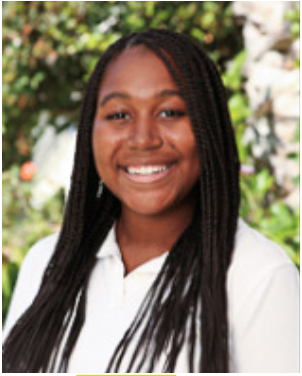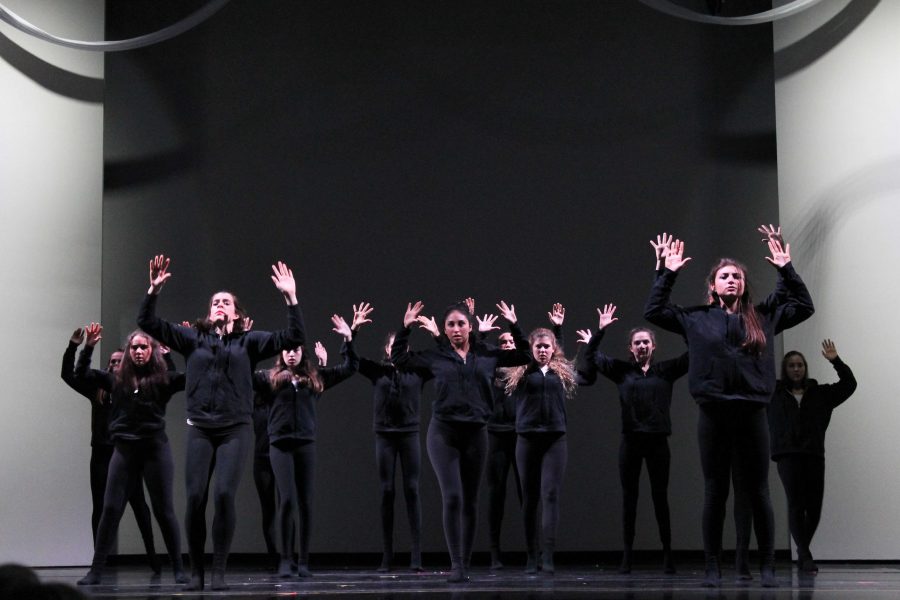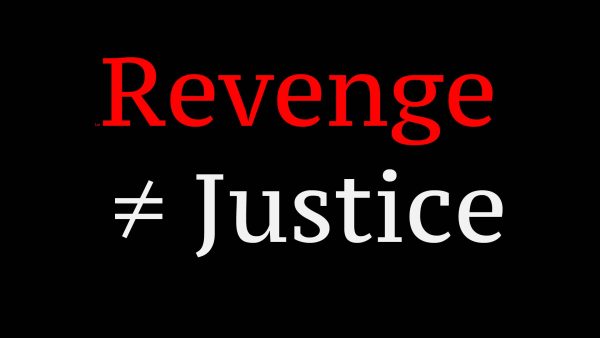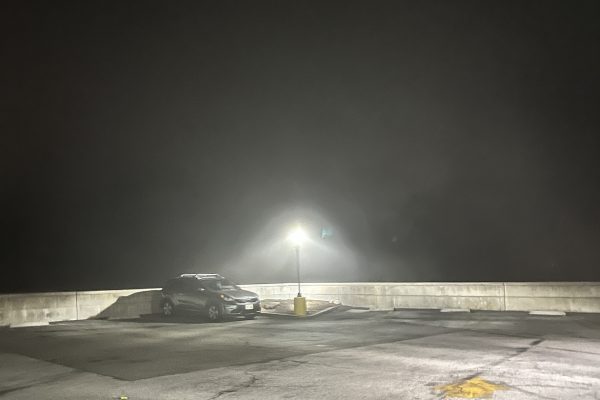Op-Ed: ‘Black Lives Matter’ dance calls for more racial awareness at Archer
Photo credit: Anika Bhavnani '17
Dance Performance Company 2 performed a dance based on the Black Lives Matter movement. This move in particular pays tribute to the phrase “Hands up, don’t shoot” used often during protests regarding the death of Michael Brown.
Let’s talk about the “Black Lives Matter” dance that was performed during this year’s Night of Dance show, “Threads.” From the moment I first heard about the dance to actually watching it live at the show, I experienced a wide range of emotions.
Our country faces reoccurring waves of discrimination, and as a Black student here at Archer, I feel we are not doing everything we can to make our student body more aware of these issues.
I was frustrated about all non-Black dancers being in a dance about Blackness because of situations I have experienced on campus.
In classes, English and history in particular, the discomfort is palpable. My non-Black classmates struggle to talk honestly about race, which makes these conversations very uncomfortable.
I feel eyes on me while watching a documentary about slavery and watch people fidget and stumble over the N-word when it comes up in class readings.
There are even students at school who freely use the N-word— not to our faces— using popular excuses like “I heard it in a song” or “my Black friends use it and say it’s okay.” Both of which… just… I can’t.
We talk about these issues in our Black Student Union meetings frequently, so I know that girls in other grades are experiencing the same things in their classes.
When I learned that there wouldn’t be any Black dancers in the “Black Lives Matter” dance, it felt like a continuation of this problem. I even heard that some dancers wanted the dance title to be changed to “All Lives Matter.”
Here’s the thing. All Lives Matter is a problem. All Lives Matter does not exist. If all lives mattered, we would not need the Black Lives Matter movement. The dancers probably were not aware, but the hashtag “#AllLivesMatter” was started by people who oppose the Black Lives Matter movement and believe that being pro-Black is anti-White.
The purpose of the Black Lives Matter movement is to raise awareness for the inequality that people of African descent face in America.
It is similar to feminism in this way. We are looking for equality.
Given all these experiences, I did not expect my opinions about the dance to change so drastically.
But they did.
I wanted to be mad because there weren’t any Black girls in the dance, but its beauty made me completely forget my doubts.
![The [name of group] dancers at the end of their performance. Photography: Anika Bhavnani '17.](https://archeroracle.org/wp-content/uploads/2016/02/IMG_7675-300x200.jpg)
I watched a video montage of facts and protests play in the background as the dancers told the story of racial discrimination and police brutality in black hoodies.
The hoodies, an homage to Trayvon Martin, were the first thing I noticed. They brought me back to when I was in ninth grade, hearing the news of the Black boy who was shot in the streets of Florida.
The choreography alluded to iconic phrases such as “Hands up, don’t shoot,” most notably used after the death of Michael Brown, and Eric Garner’s last words: “I can’t breathe.”
I cried.
I ran backstage to congratulate the girls on their amazing performance and was greeted by grateful dancers who said they were glad to be a part of something so important. They said this dance helped them to understand the purpose of Black Lives Matter.
I also met Black choreographer Jennifer Locke, daughter of Archer’s dance program coordinator Andrea Locke. Before meeting her, I had heard that she was the type of teacher to make sure her dancers understood the purpose of their performances. I believe her convictions were evident that night.
Despite my previous fears, I felt honored and respected by the dance. Having people of different races perform the piece showed solidarity and appreciation for the movement rather than being dismissive of larger problems.
I am appreciative of Archer’s efforts to incorporate race into its curriculum and arts program. I also see the value in events like the annual Diversity Conference, but there have been so many times when I have felt like racial issues on campus are brushed aside.
This dance was powerful, but I am afraid that is going to be forgotten.
I believe that the Archer community has the obligation to take concrete steps towards a more inclusive campus.
1. Curriculum: We should spend more time on Black history and current events in the classroom. Archer faculty and administration should work together to reach this goal.
2. Lean into discomfort: The popular saying from our Arrow Weeks with the NOLS applies! Do not be afraid to talk about race. Please understand that you are not going to be considered a racist if you ask questions about race. BSU is one safe environment for these conversations. Teachers, if you feel uncomfortable talking about race, BSU is also available to you.
3. Acknowledge that race is real: Race is not invisible. This is a social construct that affects your fellow Archer sisters. Also, race does not equal Black. There are many other races that are affected by discrimination every day.
Archer is a place for girls to learn in the best ways possible. The “Black Lives Matter” dance serves as a call to action. Let us work together to broaden this quest for learning how to talk more about race.

Shelby Mumford graduated in 2016. She began to write for the Oracle staff in 2015 and was a member of the swim team and the Speech and Debate team. Shelby...







![The Paris 2024 Olympic swimming pool is filled with bright lights and spectators. The Olympic games were held from July 26 to Aug. 11. While the event is meant to symbolize global unity, athletes from non-Western countries were met with accusations and scrutiny. [Paris 2024 Olympic Games] by [Roman Koksarov] is licensed under [CC BY 4.0.].](https://archeroracle.org/wp-content/uploads/2024/09/53891226234_11677c1e9f_o-1-600x415.jpg)






Ms. Coyne • Feb 29, 2016 at 8:54 pm
Powerful piece, Shelby. Your article challenges each one of us to develop a greater consciousness of our own biases.
Miaya South • Feb 27, 2016 at 4:17 pm
Wow. Beautifully said, Shelby.
Leandra Ramlo • Feb 26, 2016 at 11:47 pm
Beautifully said, Shelby. Thank you for your honesty and willingness to share your thoughts on a matter which so many of us have a hard time discussing.
Carol V • Feb 26, 2016 at 10:43 am
Great piece, Shelby!!! An open and ongoing dialogue can help those who participate become more comfortable with the topic at hand and help us better understand/embrace each other. The topic of inequality for a “minority” (person of color or being a woman – or both!) continues to be such taboo in many arenas (workplace, schools, entertainment industry, etc). We all need to become more comfortable in our ability to have open discussions. Thank you for your bravery in expressing your opinion and opening the door for all of us.
Dr. Yoshimura • Feb 25, 2016 at 9:57 am
Brava, Shelby: tu traduis le cercle d’émotions que tu as éprouvées avec élégance, et tu soulignes les “danses” que nous faisons ici chaque jour quand le sujet nous entoure mais on a du mal à l’aborder. Quant à moi et à mes invitées, on a trouvé que la danse proposait un message de solidarité renforcé par le fait qu’aucune danseuse n’était noire, ainsi affirmant que c’est nous qui ne sommes pas noirs qui insistent et qui comprennent cette vérité: Black Lives Matter.
Hannah Levy • Feb 25, 2016 at 9:50 am
Amazing op – Ed, Shelby.
Ms. Wooten • Feb 25, 2016 at 9:29 am
Excellent and insightful article. Thanks for providing a place for teachers and students to start/continue this conversation.
Dianne Lugo • Feb 25, 2016 at 7:51 am
Shelby, this was a wonderful piece that I think brings forth issues that have always been prevalent at Archer but never truly discussed so I thank you for having the courage to initiate the steps towards a much more inclusive and ‘woke’ campus. Thanks for sharing and making sure your voice is heard. Very proud.
Theresa Dahlin • Feb 24, 2016 at 8:01 pm
Shelby, Thank you. Love, Ms. D
Elizabeth English • Feb 24, 2016 at 5:56 pm
Beautifully done, Shelby. Honest and forthright. I have no doubt that your call to action will motivate the Archer Community to reflect and act on the ways we can move toward greater awareness of our racial biases. I know the faculty would welcome more open and honest conversations – both in the classroom and in our community generally.
Amanda Freiler • Feb 24, 2016 at 3:51 pm
Thank you for your candor, your truth, and your call to action. This is a discussion that needs be happening in our classrooms!
Luke Robertson • Feb 24, 2016 at 3:19 pm
This is everything an op-Ed should be, Shelby. Thank you for sharing your keen insights and for helping us all see the bigger picture here. It’s writing like this that sparks change and makes a difference…
Wendy Deming • Feb 24, 2016 at 3:19 pm
Shelby: Thank you for writing this piece! Admittedly, as an audience member, I had many questions about the #blacklivesmatter dance. I spoke with other faculty about it, but your thoughtful article extends the dialogue out to the whole community, where it needs to be. Well done. -Ms. Deming
Jolina Clement • Feb 24, 2016 at 3:15 pm
Race IS real!!! This ARTICLE is real!!! I am so humbled and compelled by your vivid descriptions and profound, honest, and incredibly necessary words. We need more of this. Thank you for sharing you, your wild sincerity, and these rock solid ideas.
Beth Gold • Feb 24, 2016 at 3:13 pm
Thank you Shelby for this honest and provocative piece. I heard from many students at the Diversity Conference that they wished we discussed race, socio economics and other issues around diversity more often and more openly at Archer. Here is an excellent opportunity for the community to engage in meaningful and productive dialogue around race. I challenge all who want to be part of this conversation to add their questions, comments, thoughts and voices either here on The Oracle site or in your classes or at one of the many diversity themed clubs on campus.
Kate Burns • Feb 24, 2016 at 3:09 pm
Shelby, I am so impressed with your thoughtful reflections and engaging writing. This is a piece you should be wholly proud of!
Ms. Sullivan • Feb 24, 2016 at 3:07 pm
Well done, Shelby! I learned a lot and I agree …..we need to learn to talk more openly about race.
Sara Seaman • Feb 24, 2016 at 8:32 am
Very well said, Shelby. Yes, please, Archer Community, come join us at BSU! Thursdays at lunch in the HD room!